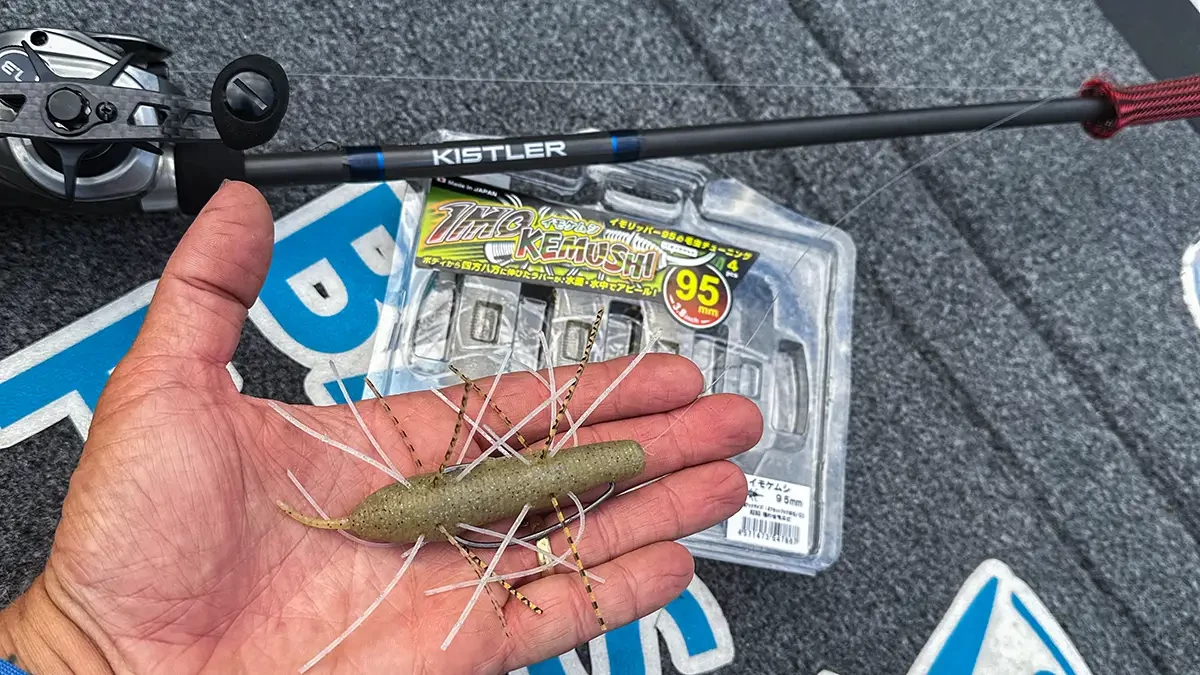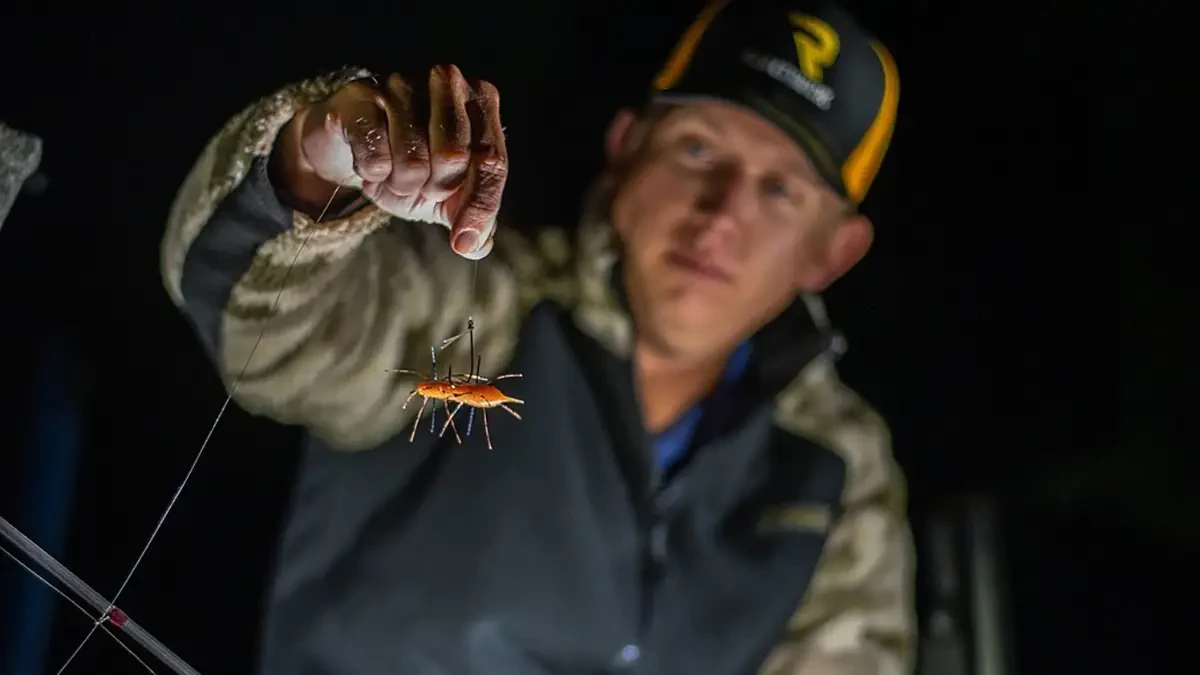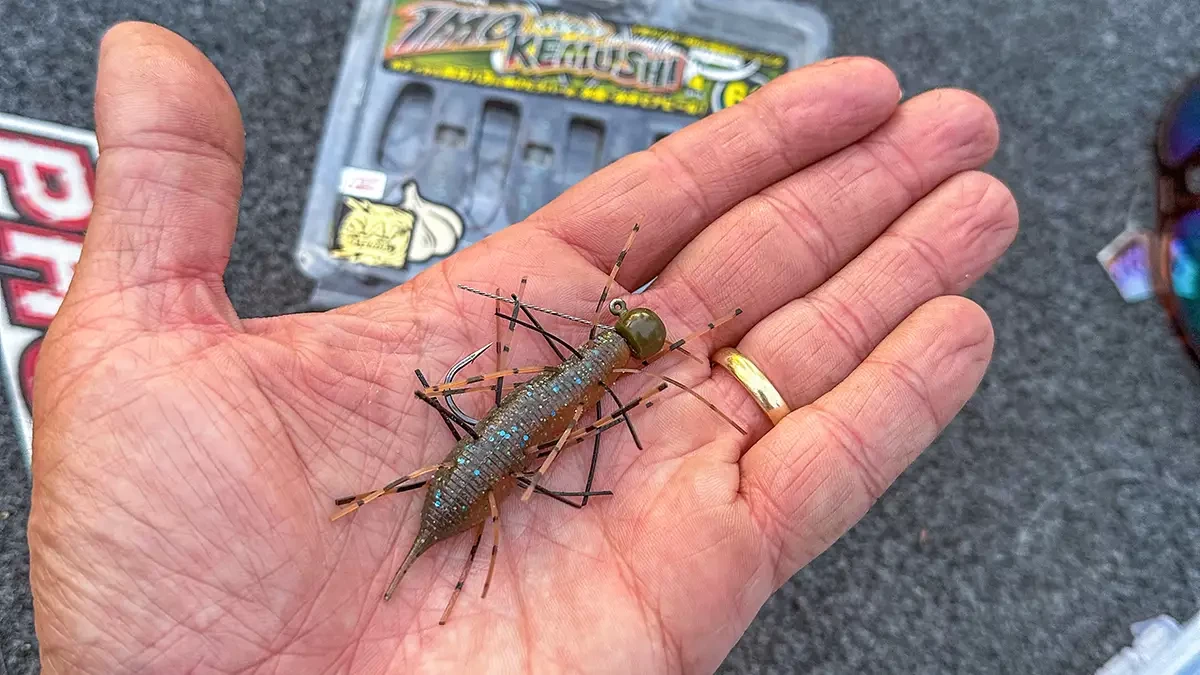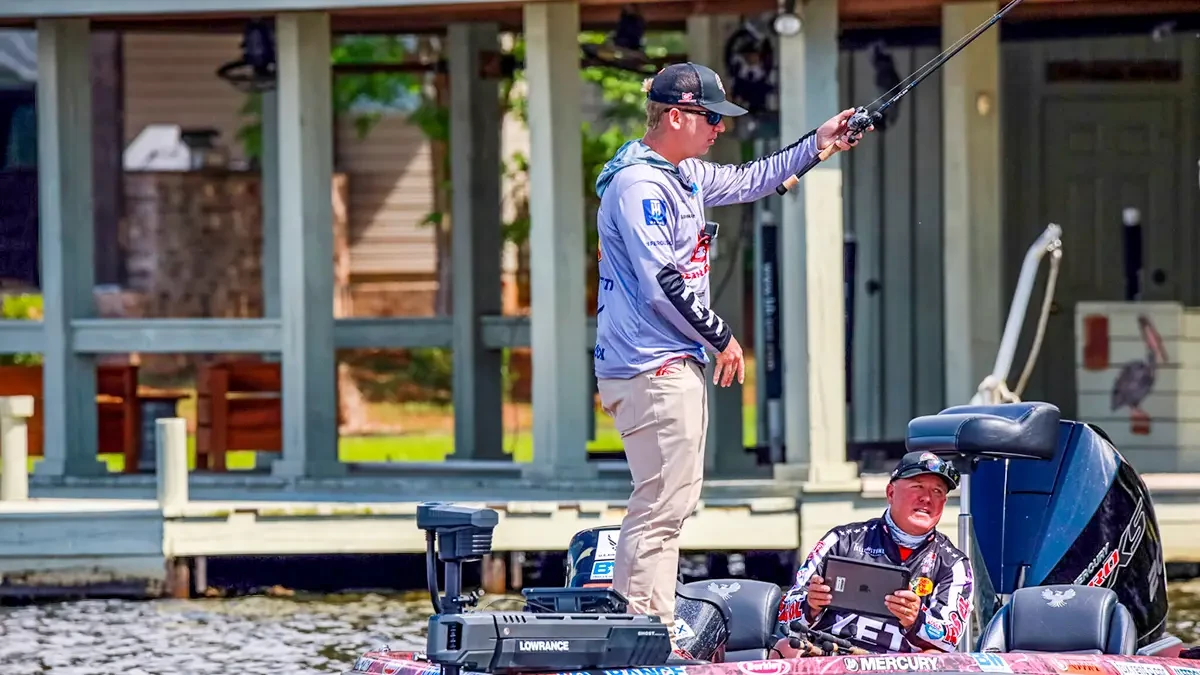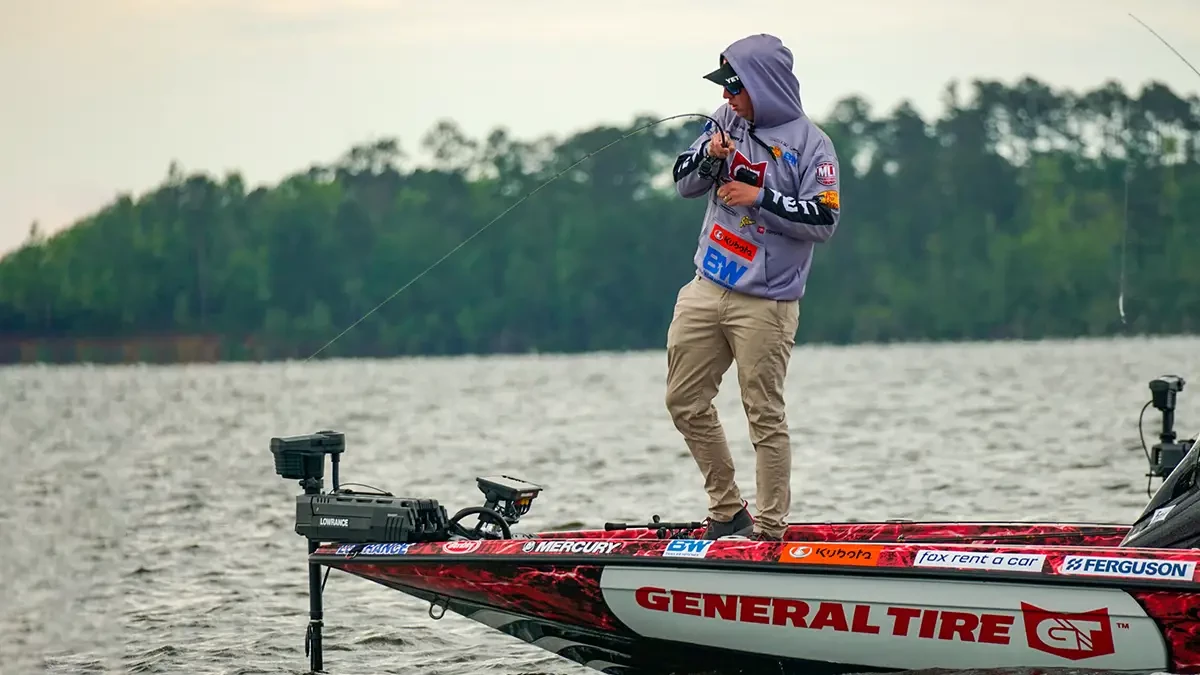The Japanese bass fishing scene is pretty intense. With limited fisheries, lots of anglers and some of the clearest water on the planet, Japanese anglers are often faced with extremely high-pressure fishing situations.
These difficult conditions, paired with the meticulous and artistic expertise of innovative Japanese companies, give birth to some pretty wild looking baits and off the wall techniques. Things that we often turn our noses up at here in the United States. That is until an uppercut from a Japanese angler or other eager-to-grow fisherman sneaks up and lifts us off our feet. This blow tends to clear out our neurological pathways and open our minds up a bit.
These baits along with the rods, reels, line and other products originating from the Land of the Rising Sun are known collectively as Japanese Domestic Market (JDM) Tackle. JDM Tackle can be hard to come by, and again look pretty weird. But anglers on the front edge that get their hands on these products, more often than not, sing their praises.
MLF Pro Alton Jones Jr is one such angler. And we sat down with him to pick his brain about the Geecrack Imo Kemushi Stick Worm. Here’s what he had to say.
What is the Imo Kemushi
“It’s the same profile and idea of a Deps Cover Scat,” said Jones, referencing one of the more popular JDM products to hit the US market recently. “It’s from the same family. It has a really heavy salt content. But this one just has rubber legs / skirt material running through it.”
As of late, multiple Japanese companies have been developing “heavy plastics”—baits with high salt content and denser plastic. The idea is to create a bait that will fall a little quicker without using any additional bullet weights, nail weights or jigheads.
“The Deps Cover Scat has probably gotten the most press. Yamamoto was actually the originator in Japan, and finally just this past month brought the Yamatanuki to the states for American anglers to fish. But none of them yet have branched into the tentacle side. So it’s like you take a Cover Scat and that dice bait that Fujita was catching them on and they had a baby.”
By “that dice bait”, Jones is referring to the cube shaped O.S.P SAIKORO Rubber that burst onto the U.S. fishing scene back in February. Elite Series Pro and four-time Japanese Angler of the Year Kyoya Fujita used this bait to finish runner-up in the 2023 Gamakatsu Bassmaster Elite at Lake Seminole. That bait features a square hunk of scent infused plastic that has four tentacle rubber legs coming out of each side. The bait traps a ton of air bubbles and moves a lot of water when it is jerked. It is a hot commodity that sells out in minutes when it comes state side.
“It’s amazing when you really dive deep in to the new trends in JDM fishing, how long these guys have been using them and how technical they are with it. These are baits that I’m throwing now that guys in Japan have been winning tournaments on at Lake Biwa for 2 to 3 years.”
One of the more storied fisheries in the world, Lake Biwa is a 165,700 acre lake where many of the world’s most revolutionary baits and techniques first meet the water. But while these baits garner great success on one of the toughest fisheries in the world, there’s often still a long lag before they make it to North American waterways. The supply is one problem, but lack of imagination is likely another.
“I think it is because it looks so wild and alive. I mean, the first time I saw it, I said, ‘what the heck is this and why would I ever throw it.’ I said the same thing about a Whopper Plopper too though. Pretty much, if I say that thing looks ridiculous and a bass will never touch it, somebody’s gonna win a hundred grand on it in the next 3 months.”
Jones has been healed of his presumptuous nature though, and has embraced the idea of trying new things. Since the time of this interview a little over a week ago, Jones won the MLF General Tire Heavy Hitters event on Bussey Brake Lake.
He did so flipping a white Geecrack Bellows Shad, another odd looking creation at first glance. But one that has a unique profile and action as well. These are what Jones accredits the success of many of the JDM baits to.
“In the world of forward facing sonar, no fish is safe. I’ve seen it over the past two or three years, since covid hit, how much harder bass have gotten to catch. Especially when looking at them on sonar.”
According to Jones, this rise in fishing pressure is the primary prerequisite for outside the box baits like the Imo Kemushi.
“I think it’s just a bait, a profile, a fall that they’re not conditioned to. It’s just a really unique profile and these baits look alive in the water.”
How to Rig It
The Imo Kemushi comes in two sizes, a 60mm (2 1/2-inch) and a 95mm (3 3/4 inch). The smaller bait works really well on a Ned rig, giving the bass something entirely new to look at. But the real beauty and uniqueness of this bait becomes apparent when rigging the Imo Kemushi 95 weightless.
“If you’re rigging it weightless, it falls perfectly horizontal. So it just has a really natural, slow fall.”
This heavily salted soft plastic bait falls at a rate of one foot per second, and again this is when rigged without a weight. This is the idea behind the Imo Kemushi, the Yamatanuki and the Cover Scat. All of these baits are designed to be heavy enough to fish without adding any weight at all.
“The larger one is where I cut my teeth with the tactic. It’s a really good offshore bait. Super good for fishing around really pressured fish. But you need fairly calm conditions to fish it.”
When rigging the larger bait weightless, Jones doesn’t use a wacky or Neko hook like he would with a traditional soft plastic stick bait or trick worm. This is a different deal entirely.
“It depends on the type of cover. If I’m fishing really heavy cover or heavy vegetation, I’m going to throw a big 5/0 or 6/0 EWG (Extra Wide Gap). But what I’ve found out is it’s a lot of plastic.”
Due to the thickness and density of the plastic, Jones admits that it is hard to get his hook to penetrate through the bait and into the fish using this method.
“If it’s not a brand new, perfect bait, that thing will slide down on you. And when it does slide down, it’s going to ball up and you will not catch that bass.”
To prevent the nose of the bait from sliding down the hook shaft, Jones will use a touch of super glue at the eye of his hook. This will help secure the bait. To better his hookup ratio though, he prefers to rig this bait with the hook exposed entirely when possible.
“If I can, when I go up North and I’m fishing rocky bottom or short scattered grass, I actually super glue it on a 5/0 flipping hook, threaded. Now it’s hangy, but it’s fine around sand and rock. And your hookup percentage is obviously a hundred percent at that point.”
How to Fish the Imo Kemushi
“You almost twitch it like you would a soft jerkbait,” Jones said. “Now I’m not twitching it quite up in the water column, but the big one, especially, almost walks the dog in place. It’s really, really unique. As you twitch it, those tentacles are going to compress. And as it stops, they’re going to flare back out.”
Jones has used this bait on bedding fish as well, but more to aggravate them than to actually catch them. With the hookup ratio being an issue unless he rigs the bait with the hook exposed, and not wanting to risk snagging a bedding bass with the hook exposed, Jones rigs one of these baits with no hook at all and pitches it into the bed.
“I had one rigged up at Murray with no hook on it, just to flip in there if there was some fish that really wouldn’t interact with the bait. If one wouldn’t come into the bed, it was all of a sudden like what in the world is in my space.”
The stunned behavior and instinctual reaction of the bedding bass to this bait reminded Jones of how bedders responded to an Osprey swimbait some years ago, when anglers first realized flipping a big swimbait like this into the bed would trigger the bass into locking on and being aggressive.
Jones has also seen smallmouth react to these baits better than they would to anything else. He recalled a trip to Mille Lacs when he really started to understand how effective the Imo Kemushi is.
“I was fishing those isolated boulders. There were several boulders that I’d fish for upwards of 5 to 10 minutes with a drop shot, with your typical Shad Shape Worms and that kind of stuff, without a bite. I’d throw that thing out there weightless and one would come up and eat it before it ever hit the bottom. It’s just has that unique, wow factor that’s hard to present to a fish these days.”
Jones’s success with this technique during the 2022 season spilled over onto Cayuga as well. And he doesn’t anticipate the bass becoming conditioned to the bait anytime soon.
“I caught them in 20 feet of water doing it. I was able to catch fish behind people who were throwing a drop shot and crankbait. We’re about to go to Guntersville. I’m really looking forward to trying to explore that on some of those typical Tennessee River giant schools of heavily pressured fish.”
Imo Kemushi Gear
When it comes to gear, Jones recommends keeping it simple. The smaller version of the Imo Kemushi can be tested out on any spinning setup that you use for a drop shot, Ned rig or a wacky worm. The bigger version requires a baitcaster though.
“If I can get away with it, I’m throwing 50- pound braid to a 20- pound fluorocarbon leader. Especially with the EWG where I talk about having issues with the bait balling up. Not having to worry about stretch in the line or how much slack you have really tends to help on the hookup ratio.”
If the bass are a little more finicky, Jones will back off to 17- pound Gamma Fluorocarbon. But he stressed that he really likes the braid to fluoro leader when possible, as it helps his hookup ratio substantially.
Jones has quickly become a seasoned pro and has embraced the fact that he’ll need to adapt and do so rapidly to compete at a high level. Staying on the leading edge is necessary to stay atop the leaderboard. Prejudice towards odd looking baits is a luxury he can’t afford. If they bite them, throw them, don’t overthink it.
“A bass is an opportunistic creature. I don’t know what they think it is, but it’s just something they’ve never seen before, they know it’s moving and they can put their mouth around it.”


